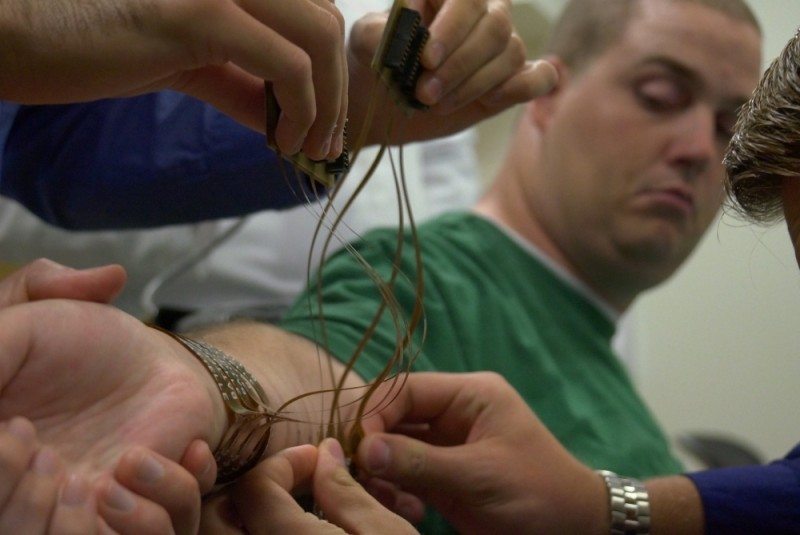New Technology Allows Brain to Move Paralyzed Limb
Recently developed Neurobridge technology can enable people with paralyzed limbs to move just by thinking, according to a report from Science Daily. Twenty three-year-old Ian Burkhart has been paralyzed for four years, since a wave drove him headfirst into a sandbar breaking his neck. For the first time since his accident he has been able to move his fingers and hand using his own thoughts.
The Neurobridge, developed by a team from the Ohio State University Wexner Medical Center and non-profit research organization Battelle, took almost 10 years to complete. It bypasses the spinal cord and sends electrical signals, which reconnect the brain directly to the muscles. The device functions by means of algorithms, which decode the user’s brain signals, and a muscle stimulation sleeve that sends the translated signals to the paralyzed limb. In an interview with GeekExchange.com, Chad Bouton, research leader at Battelle said, “It’s much like a heart bypass, but instead of bypassing blood, we’re actually bypassing electrical signals.” For the Neurobridge to function, Ian had to undergo surgery to have a micro-chip sensor, about the size of a pea, implanted in his motor cortex—the area of his brain that controls his hand and arm movements.
According to Battelle, almost 1 in 50 people live with some form of paralysis, the leading cause of which is a stroke. The leading cause of a spinal cord injury is a work accident.
This technology is a major medical breakthrough for people with brain and spinal cord injuries. Experts at Battelle are also developing neurostimulation devices to help people who suffer from chronic pain, such as migraines, phantom limb pain, or diseases such as Parkinson’s. These pace-maker size devices generate electrical impulses to stimulate nerves in order to block pain.
Image credit: Your News Ticker




















